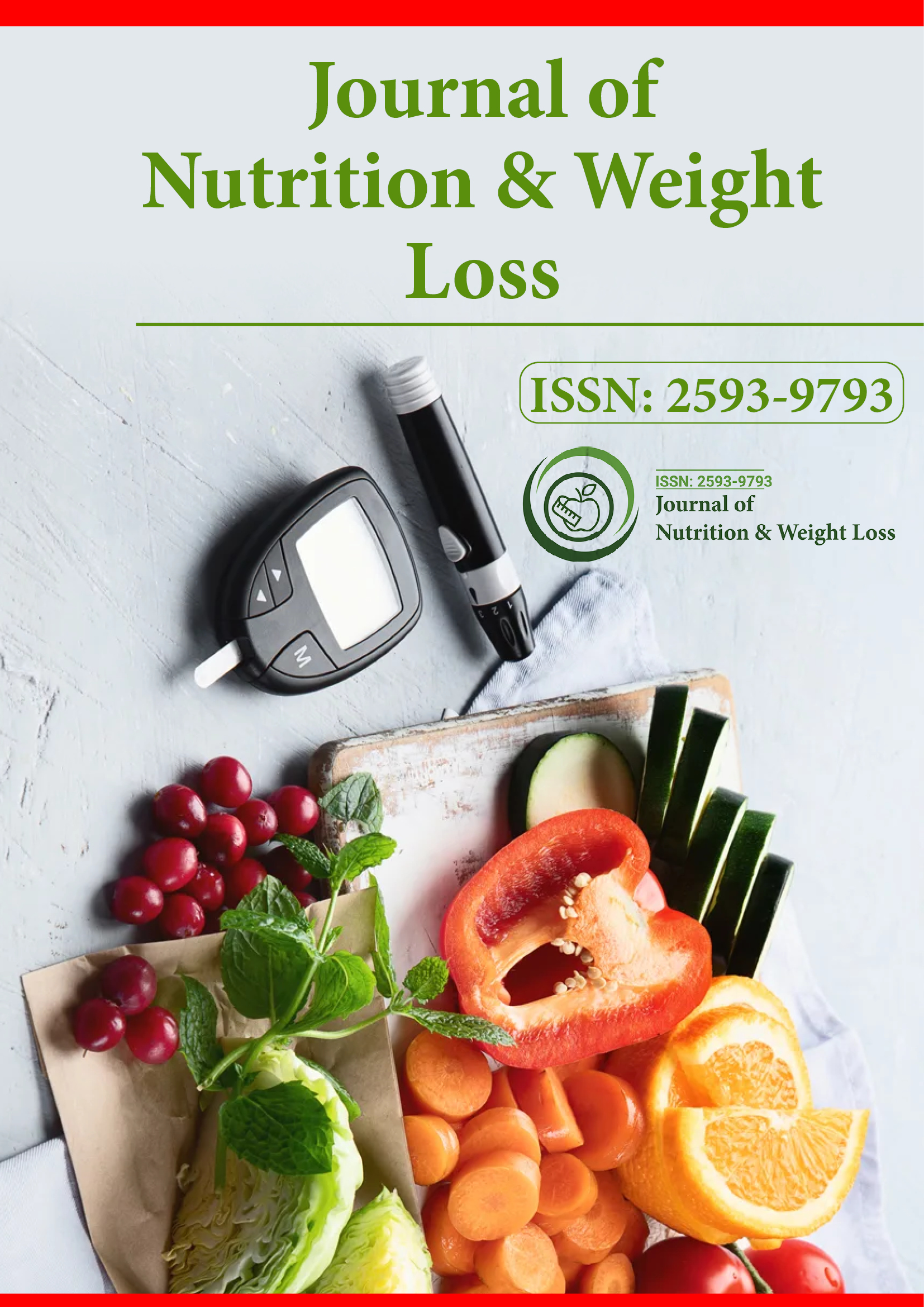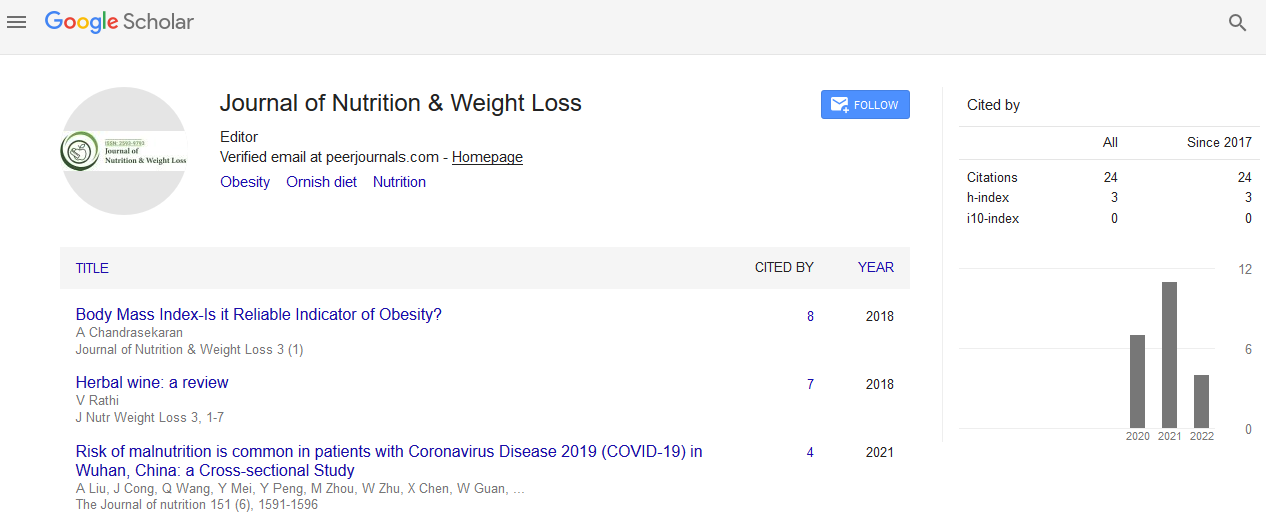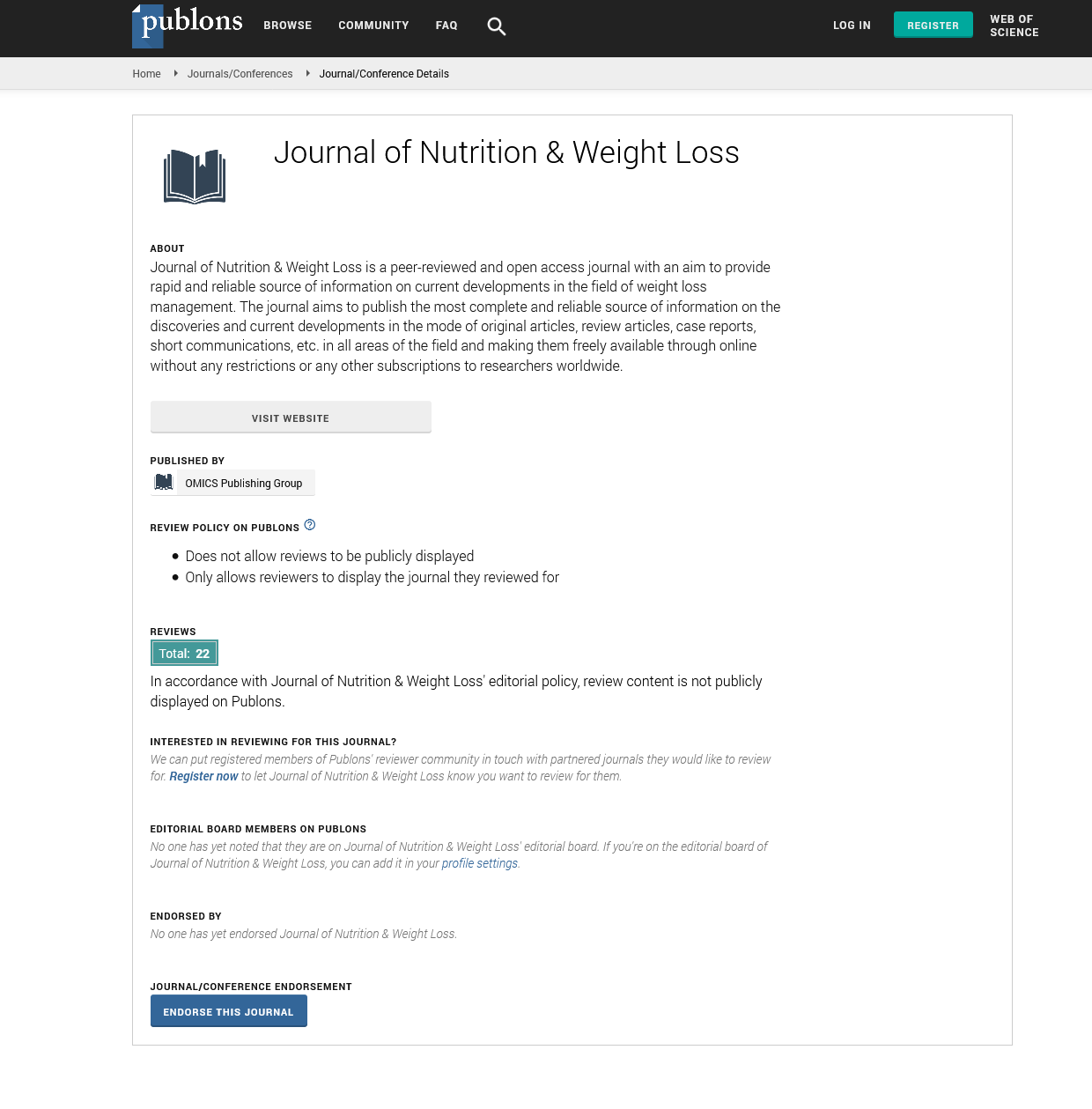Indexed In
- RefSeek
- Hamdard University
- EBSCO A-Z
- Publons
- Euro Pub
- Google Scholar
Useful Links
Share This Page
Journal Flyer

Open Access Journals
- Agri and Aquaculture
- Biochemistry
- Bioinformatics & Systems Biology
- Business & Management
- Chemistry
- Clinical Sciences
- Engineering
- Food & Nutrition
- General Science
- Genetics & Molecular Biology
- Immunology & Microbiology
- Medical Sciences
- Neuroscience & Psychology
- Nursing & Health Care
- Pharmaceutical Sciences
Commentary - (2023) Volume 8, Issue 4
Nutritional Equilibrium: Maintaining a Healthy Weight through Exchange Strategies
Abdoulaye Paul*Received: 27-Nov-2023, Manuscript No. JNWL-23-24729; Editor assigned: 30-Nov-2023, Pre QC No. JNWL-23-24729 (PQ); Reviewed: 14-Dec-2023, QC No. JNWL-23-24729; Revised: 21-Dec-2023, Manuscript No. JNWL-23-24729 (R); Published: 28-Dec-2023, DOI: 10.35248/2593-9793.23.8.185
Description
Nutritional weight management drive often involves making significant changes to one's diet. The food exchange system has emerged as a valuable tool in this endeavor, ensuring that individuals can achieve their weight loss goals without cooperating essential nutrient intake. In this article, we will explore how most nutrients can be maintained at acceptable levels during a weight management program using the food exchange system.
Understanding the food exchange system
The food exchange system is a structured approach to meal planning that categorizes foods based on their macronutrient content. It simplifies dietary choices by grouping similar foods together and assigning each group a specific serving size. This method allows individuals to exchange foods within the same category, maintaining a balanced nutrient intake while managing calorie consumption.
Protein intake: One of the critical components of a healthy diet, protein is essential for muscle maintenance, immune function, and overall body repair. During a weight management program, the food exchange system ensures that individuals receive an adequate amount of protein by categorizing various protein sources. For example, lean meats, poultry, fish, eggs, and plant- based proteins fall into the same category, allowing for easy substitutions without compromising protein intake.
Carbohydrate management: Carbohydrates are a primary source of energy, but their excessive consumption can contribute to weight gain. The food exchange system helps manage carbohydrate intake by classifying foods into groups such as grains, fruits, and vegetables. This approach enables individuals to make informed choices, opting for complex carbohydrates over simple sugars and ensuring a steady release of energy throughout the day.
Fats in moderation: While dietary fats are often associated with weight gain, they are important for nutrient absorption and hormone production. The food exchange system includes a category for fats, promoting the consumption of healthy fats such as avocados, nuts, and olive oil while limiting saturated and Tran’s fats. This balance allows individuals to maintain essential fat intake while working towards their weight management goals.
Vitamins and minerals: A common concern during weight management is the potential for nutrient deficiencies. The food exchange system addresses this by emphasizing a variety of food choices within each category, ensuring a diverse range of vitamins and minerals. Fruits, vegetables, whole grains, and lean proteins offer a spectrum of essential nutrients, promoting overall health and wellness.
Caloric control: While nutrient intake is a essential aspect of weight management, caloric control remains at the position of the process. The food exchange system provides a practical approach to calorie management by assigning specific serving sizes to different food groups. This allows individuals to create well-balanced meals that align with their calorie targets, encouraging a sustainable and effective weight loss journey.
One of the strengths of the food exchange system is its adaptability to individual dietary preferences and health conditions. Whether someone is managing diabetes, following a vegetarian or vegan diet, or dealing with specific allergies, the food exchange system can be customized to meet their unique requirements. This flexibility ensures that individuals can achieve their weight management goals without potential. In the activity of weight management, the food exchange system stands out as a practical and effective tool for balancing nutrient intake. By categorizing foods based on their macronutrient content and providing clear guidelines for portion control, this system empowers individuals to make informed choices while working towards their weight loss goals. Whether focusing on protein, carbohydrates, fats, vitamins, or minerals, the food exchange system allows for a well-rounded and sustainable approach to achieving and maintaining a healthy weight. This method not only supports successful weight management but also promotes overall nutrition.
Citation: Paul A (2023) Nutritional Equilibrium: Maintaining a Healthy Weight through Exchange Strategies. J Nutr Weight Loss. 8:185.
Copyright: © 2023 Paul A. This is an open access article distributed under the terms of the Creative Commons Attribution License, which permits unrestricted use, distribution, and reproduction in any medium, provided the original author and source are credited.


